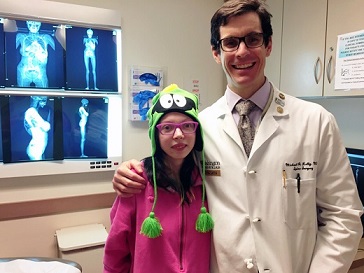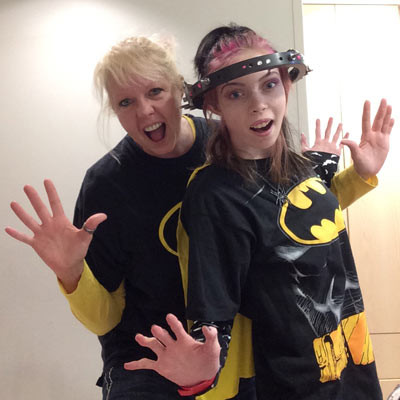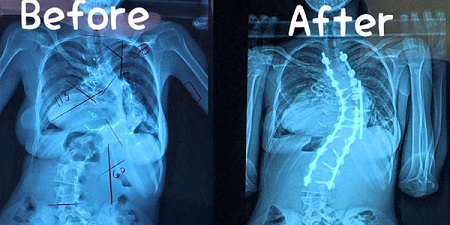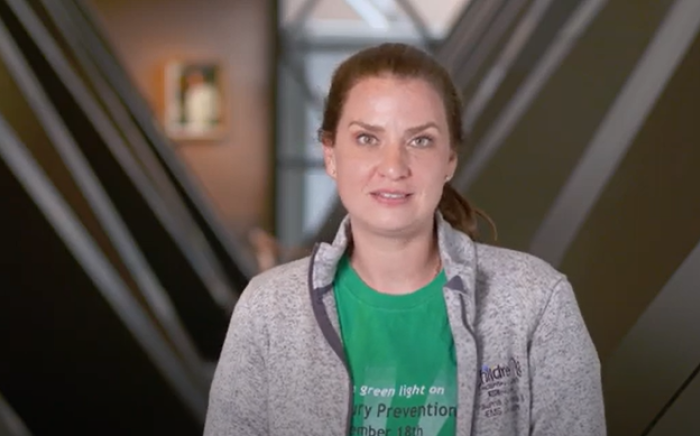 Madison Miller is creative. She makes YouTube videos, loves makeup and designs art at her home in Udall, Kansas. These hobbies help the 21-year-old stay busy without being too tiring. They also played a big part in getting her through one of the toughest times in a young life full of challenges.
Madison Miller is creative. She makes YouTube videos, loves makeup and designs art at her home in Udall, Kansas. These hobbies help the 21-year-old stay busy without being too tiring. They also played a big part in getting her through one of the toughest times in a young life full of challenges.
At birth, doctors diagnosed Madison with DiGeorge syndrome, a disorder caused by a small defect in the 22nd chromosome. Symptoms vary but for Madison, it means heart problems. She also struggles to gain weight and build muscle.
“She’s a little warrior,” said Madison’s mom, Niki Carter. Carter said doctors repaired holes in Madison’s heart when she was a baby.
Around the age of 13, Madison began to develop scoliosis. She would need surgery but doctors and her family hoped Madison would grow a little bigger and stronger first. At 19, Madison had grown as much as she could. She was about 4 feet, 9 inches tall and weighed around 65 pounds when doctors replaced a faulty heart valve.
About a year after open heart surgery, at the age of 20, doctors said Madison was strong enough for another surgery, this time to correct her scoliosis.“It got a lot worse in a short period of time,” Carter said. “Because of her complex health, a spine doctor in Kansas City referred us to Dr. Kelly.”
Michael Kelly, MD, MSc, is a Washington University spinal orthopedic surgeon at St. Louis Children's Hospital. When he met Madison in September of 2015, she had a 145 degree curvature of her spine. Anything more than 40 to 50 degrees is considered severe. Madison’s spine pushed into her organs, including her lungs. “If we didn’t do anything, my survival rate was five years,” said Madison. “Dr. Kelly said he could help me.”
 The spinal cord should be in the middle of the back. “In Madison’s case, 90-percent of her spine was on the left side of her body,” said Dr. Kelly. “When the scoliosis is that large, it begins to affect the heart and lungs and becomes more painful.”
The spinal cord should be in the middle of the back. “In Madison’s case, 90-percent of her spine was on the left side of her body,” said Dr. Kelly. “When the scoliosis is that large, it begins to affect the heart and lungs and becomes more painful.”
One month after meeting with Dr. Kelly, Madison and her mother again made the seven hour trip from Kansas to St. Louis Children’s Hospital, where Madison would spend the next three months. “We began by attaching a halo traction brace to her skull,” said Dr. Kelly. “That helped stretch her out slowly before surgery.”
For Madison, it was not easy. “Some days she didn’t want to get out of bed,” said Carter. “But the nurses, our social worker, everyone else at St. Louis Children’s Hospital were amazing. They motivated her. There was always an activity and it all helped keep up her spirits.”
Madison stayed busy with games, activities and crafts. She loved to spend time in the rooftop garden. Still, she struggled. To keep her spirits up, the hospital staff arranged a special surprise: a makeup artist came to Madison’s room with a bag full of makeup for her and a private lesson on how to apply it.
Madison, her mom and several family members spent Halloween, Thanksgiving and Christmas in the hospital. The social worker helped arrange a room at the Ronald McDonald house for her family. For Madison, they arranged a special phone call. “She got to FaceTime with her dog, Lucy,” said Carter.
Finally, after three months in halo traction, Madison was ready for surgery. In December 2015, Dr. Kelly performed a vertebral column resection, removing and rebuilding the curved section of Madison’s spine. “We used screws in her spine and cut the middle out so it’s more flexible. That way we are able to bend it more and put it where we want it,” said Dr. Kelly. “It’s a large surgery but children recovery quickly.”

 Not long after the surgery, Madison returned to her home in Udall, Kansas. “We are so very thankful,” said Madison’s mom. “She still has a small curve but her quality of life greatly improved. She may be bent, but not broken.”
Not long after the surgery, Madison returned to her home in Udall, Kansas. “We are so very thankful,” said Madison’s mom. “She still has a small curve but her quality of life greatly improved. She may be bent, but not broken.”
More than that, “Dr. Kelly saved my life,” said Madison.












